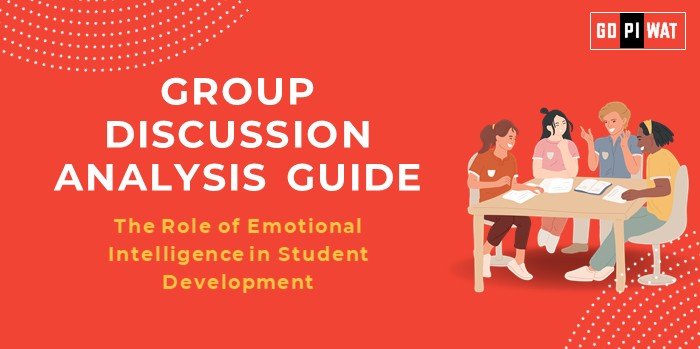📋 GD Guide: The Role of Emotional Intelligence in Student Development
🌟 Introduction to the Topic
Opening Context: Emotional Intelligence (EI) has emerged as a cornerstone of modern education, influencing academic performance, interpersonal relationships, and overall well-being. Its significance is especially pronounced in the dynamic environments of B-schools, where teamwork, leadership, and empathy are critical.
Topic Background: Coined by psychologists Peter Salovey and John Mayer, and popularized by Daniel Goleman, EI encompasses self-awareness, self-regulation, motivation, empathy, and social skills. Recent studies underscore its role in fostering resilience, collaboration, and ethical decision-making among students.
📊 Quick Facts and Key Statistics
- 📈 Increased EI Correlation: Students with high EI show 12% better academic performance on average (Journal of Educational Psychology, 2023).
- 🏆 Leadership Success: 90% of top-performing leaders exhibit high EI (World Economic Forum, 2023).
- 💡 Mental Health Impact: EI training reduces student anxiety levels by 25% (APA, 2023).
- 🌍 Workplace Relevance: EI ranks among the top 10 skills for the future workforce (WEF Future of Jobs Report, 2023).
👥 Stakeholders and Their Roles
- 🏛️ Educational Institutions: Integrating EI into curricula and promoting holistic development.
- 🎓 Students: Embracing EI as a tool for personal and professional growth.
- 👨👩👧👦 Parents and Communities: Supporting EI through nurturing environments.
- 🏢 Corporate Sector: Recognizing EI in recruitment and leadership programs.
🏆 Achievements and Challenges
✨ Achievements:
- ✔️ Curricular Integration: Many schools now include SEL (Social-Emotional Learning) programs.
- ✔️ Improved Engagement: Higher classroom participation linked to EI-focused teaching methods.
- ✔️ Global Examples: Finland and Singapore have embraced EI in education, achieving improved student outcomes.
⚠️ Challenges:
- 🚧 Lack of Standardized Metrics: Difficulties in measuring EI development.
- 🚧 Teacher Training: Insufficient training programs for educators to impart EI effectively.
- 🚧 Cultural Barriers: Resistance in regions emphasizing traditional academic success over soft skills.
💡 Structured Arguments for Discussion
✔️ Supporting Stance:
“Emotional intelligence equips students with the resilience and empathy essential for collaborative success in dynamic workplaces.”
❌ Opposing Stance:
“The focus on emotional intelligence may dilute core academic rigor in competitive education systems.”
⚖️ Balanced Perspective:
“While academic achievements are foundational, integrating EI ensures a well-rounded, future-ready individual.”
🧠 Effective Discussion Approaches
- 📊 Begin with a compelling statistic about EI’s impact on leadership.
- 📖 Narrate a short case study of successful EI integration in schools.
🛠️ Counter-Argument Handling:
- “Address concerns by presenting examples of systems where EI complements academic performance.”
🔍 Strategic Analysis of Strengths and Weaknesses
💪 Strengths:
- ✔️ Enhances leadership.
- ✔️ Improves teamwork.
- ✔️ Promotes mental health.
❌ Weaknesses:
- 🚧 Lack of standardized teaching methods.
- 🚧 Cultural resistance.
🌟 Opportunities:
- 📈 Global benchmarks.
- 📈 Technology-driven EI assessments.
⚡ Threats:
- ❓ Misinterpretation or superficial integration into curricula.
📈 Connecting with B-School Applications
Real-World Applications: EI’s role in team projects, conflict resolution, and leadership programs.
Sample Questions:
- 💬 “How would you leverage emotional intelligence in managing a team conflict?”
- 💬 “Discuss an instance where EI influenced your decision-making.”


